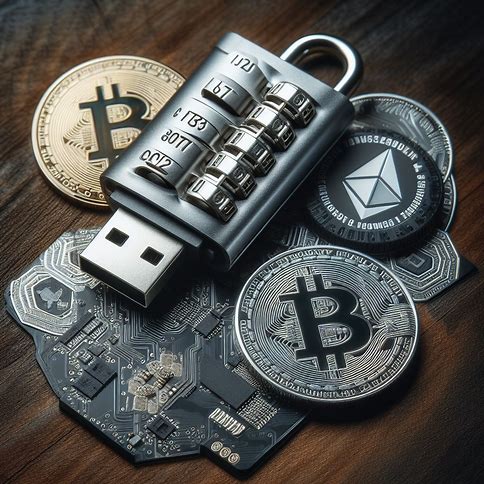In cryptocurrencies, keeping your digital assets secure is very important. One of the most significant threats to your crypto holdings is falling victim to fake crypto wallets. These deceptive tools can drain your funds in an instant. To secure yourself, here is how to identify fake crypto wallets.
1. Suspicious URLs
On how to identify fake crypto wallets, you need to always double-check the URL of the website or app offering the crypto wallet. Scammers often create websites with URLs that closely resemble those of legitimate wallet providers, with slight variations in spelling or domain extensions. Be cautious of wallets hosted on unfamiliar or suspicious-looking domains.
2. Unsolicited Offers
Be wary of unsolicited messages or emails promoting new or unknown crypto wallets. Scammers often use phishing tactics to lure users into downloading fake wallets. If you receive an unexpected offer for a wallet, especially one that promises unrealistic returns or bonuses, it’s likely a scam.
3. Lack of reputation
Before using any crypto wallet, research its reputation within the cryptocurrency community. Legitimate wallets will have a track record of positive user reviews, active development, and a strong online presence. If a wallet lacks a credible reputation or has minimal information available, it’s best to avoid it.
Related: How Much Does it Cost to Mint an NFT?
4. Poor user interface
Fake crypto wallets often have poorly designed user interfaces or contain numerous grammatical and spelling errors. While not all legitimate wallets have perfect designs, a wallet that appears hastily put together or lacks professional polish should raise suspicions.
5. Requesting private keys
A genuine crypto wallet will never ask for your private keys or seed phrase. If a wallet prompts you to enter this sensitive information during the setup process or any other time, it’s a clear indication that it’s a fake wallet attempting to steal your funds.
Best Practices for Choosing a Secure Crypto Wallet
To minimize the risk of falling victim to fake crypto wallets, follow these best practices when selecting a wallet for your digital assets:
1. Stick to Well-Known Wallets: Choose crypto wallets that have a strong reputation within the cryptocurrency community. Well-established wallets, such as hardware wallets like Ledger or Trezor, or software wallets like MyEtherWallet or Exodus, have a proven track record of security and reliability.
2. Verify Official Sources: Always download crypto wallets from their official websites or trusted app stores. Double-check the URLs and ensure you are on the genuine website before downloading any software. Avoid downloading wallets from third-party sources or links shared on social media.
3. Enable Two-Factor Authentication: When setting up your crypto wallet, enable two-factor authentication (2FA) whenever possible. This adds an extra layer of security to your wallet by requiring a second form of verification, such as a code sent to your phone, before allowing access to your funds.
4. Keep Your Private Keys Secure: Your private keys are the ultimate access to your cryptocurrencies. Never share them with anyone, and store them securely offline, such as on a hardware wallet or a paper wallet. Avoid storing your private keys on internet-connected devices or cloud storage services.
5. Stay Updated: Regularly update your crypto wallet software to ensure you have the latest security features and bug fixes. Legitimate wallets will release updates to address any vulnerabilities or improve functionality. Keep an eye out for official announcements from the wallet provider.
What to Do If You Suspect a Fake Crypto Wallet
If you suspect that you have encountered a fake crypto wallet, take the following steps:
1. Do Not Enter Your Private Keys: If you have not yet entered your private keys or seed phrase into the suspected fake wallet, do not proceed any further. Close the website or app immediately and report it to the appropriate authorities or crypto community forums.
2. Move Your Funds: If you have already entered your private keys into a fake wallet, immediately transfer your remaining funds to a secure wallet that you trust. Change your private keys and enable 2FA on your new wallet to prevent any further unauthorized access.
3. Report the Scam: Report the fake crypto wallet to the relevant authorities, such as the Federal Trade Commission (FTC) or your local law enforcement agency. Provide as much information as possible, including screenshots, URLs, and any communication you had with the scammers.
4. Spread Awareness: Share your experience with the crypto community to help others avoid falling victim to the same scam. Post warnings on social media, forums, and crypto-related websites to alert others about the fake wallet.
Key Takeaways
1. Fake crypto wallets pose a significant threat to your digital assets by tricking you into handing over control of your funds to scammers.
2. Be cautious of suspicious URLs, unsolicited offers, wallets with poor reputations, poorly designed user interfaces, and wallets that request your private keys.
3. Choose well-known and reputable crypto wallets, download them from official sources, enable two-factor authentication, keep your private keys secure, and stay updated with the latest software.
4. If you suspect a fake crypto wallet, do not enter your private keys, move your funds to a secure wallet, report the scam to authorities, and spread awareness to help others avoid falling victim.
5. Always keep your private keys private and never share them with anyone to maintain the security of your cryptocurrencies.
6. Stay informed about the latest scams and best practices in the cryptocurrency world to protect your digital assets from fake crypto wallets and other threats.
7. Regularly review and update your security measures, such as enabling 2FA and using hardware wallets, to ensure the ongoing protection of your funds.
Frequently Asked Questions
1. What are fake crypto wallets?
Fake crypto wallets are fraudulent websites or apps that mimic legitimate wallets to trick users into entering their private keys or seed phrases, allowing scammers to steal their cryptocurrencies.
2. How can I spot a fake crypto wallet?
You can spot a fake crypto wallet by looking out for red flags such as suspicious URLs, unsolicited offers, poor reputation, poorly designed user interfaces, and requests for your private keys.
3. Can I recover my funds if I fall victim to a fake crypto wallet?
Unfortunately, if you have entered your private keys into a fake crypto wallet and your funds have been stolen, it is unlikely that you will be able to recover them. Cryptocurrencies are decentralized and transactions are irreversible, making it difficult to trace or retrieve stolen funds.
4. Are hardware wallets safer than software wallets?
Hardware wallets are generally considered safer than software wallets because they store your private keys offline on a physical device, reducing the risk of hacking or malware attacks. However, both types of wallets can be secure if you follow best practices and choose reputable providers.
5. How often should I update my crypto wallet software?
It is recommended to update your crypto wallet software regularly, whenever the wallet provider releases new updates. These updates often include important security patches and bug fixes that help protect your funds from potential vulnerabilities.
6. Can I trust wallets recommended by influencers or online forums?
While influencers or online forums may provide wallet recommendations, it is essential to do your own research and verify the legitimacy of any wallet before using it. Scammers may use fake endorsements or create fake online communities to promote their fraudulent wallets.
7. What should I do if I receive an unsolicited offer for a crypto wallet?
If you receive an unsolicited offer for a crypto wallet, especially one that promises unrealistic returns or bonuses, it is likely a scam. Do not click on any links or download any software from these offers. Instead, report them as spam and delete the messages.










